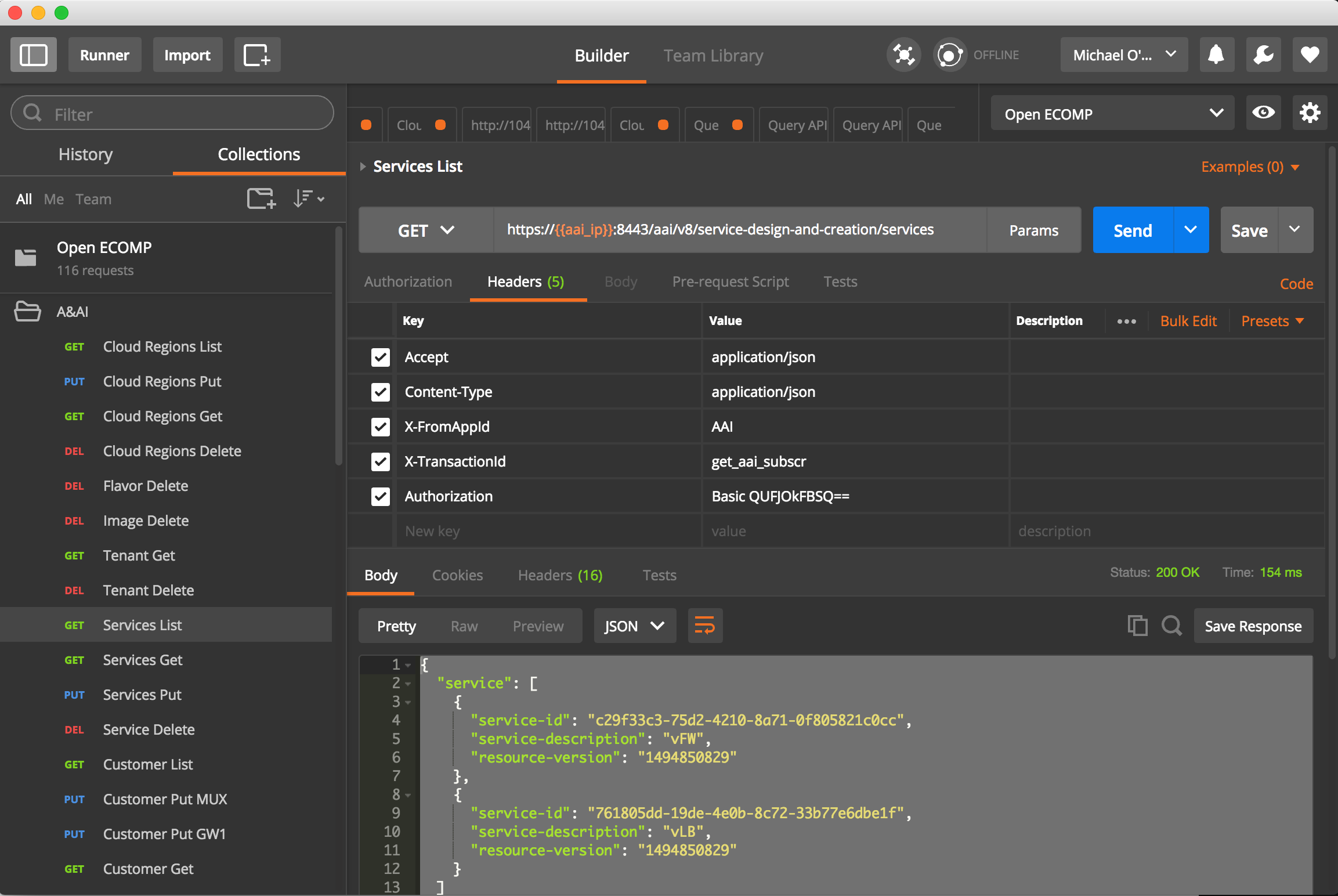The Active and Available Inventory (AAI or A&AI) has its own REST API.
The AAI REST API provides access to the AAI active inventory graph. The API is largely configured from models and configuration files. Each vertex in the graph has an API that can be called separately or, if part of a tree structure, as a nested element with one or more generations (parent, grandparent, and so on).
The edges of the graph are provisioned using a relationship list construct. For PUT methods, a relationship contains the vertex type or category (related-to) and a list of relationship data which captures the key pieces of data required to uniquely identify the resource. On a GET method, the above information and a URL are returned. The URL can be used to GET all the details of that object. The URL returned is suitable for retrying failed commands but should not be expected to be cacheable for very long periods (e.g., the version of the URL may get deprecated when the release changes).
API Definition
The API structure is composed of:
- The HTTP command, which indicates the operation to perform
- The HTTP URI, which defines what object this operation is related to
- The HTTP version, which MUST be 1.1
Available HTTP commands are:
- PUT: used to create or update an object
- DELETE: used to delete an object or a set of objects
- GET : used to query an object or set of objects
- PATCH : used to update specific fields owned by the client doing the update
The HTTP URI is built according to this pattern:
https://{serverRoot}/{namespace}/{resource}
- (serverRoot} refers to the server base url: hostname+port+base path+version. Port and base path are OPTIONAL but AAI will use port 8443 and base path aai. The first release version will be v8.
- {namespace} refers to the API namespace. Supported namespaces are cloud-infrastructure, business, service-design-and-creation, and network
- {resource} refers to how the object is identified according to the namespace specifications.
Example
GET https://{host-url}:8443/aai /v8/cloud-infrastructure/cloud-regions/cloud-region/{cloud-owner}/{cloud-region-id}
Postman example
Logs
aaiadmin@vm1-aai:/opt/app/aai/logs$ pwd /opt/app/aai/logs aaiadmin@vm1-aai:/opt/app/aai/logs$ cat ajsc-jetty/localhost_access.log from VID portal 10.0.8.1 VID VID [05/Jul/2017:02:48:03 +0000] "GET /aai/v8/business/customers" 500 0 REST 10.0.8.1 VID VID [05/Jul/2017:02:48:16 +0000] "GET /aai/v8/service-design-and-creation/services" 500 0 REST from a browser 32.60.102.40 AAI AAI [05/Jul/2017:14:46:48 +0000] "GET /aai/v8/service-design-and-creation/services" 400 0 REST |
|---|
References
The full definition of the API can be found here: AAI REST API document. The API documentation generated from the schema (OXM file) can be found here: AAI REST API Specifications. The XSD generated from the schema can be found here: AAI schema.
